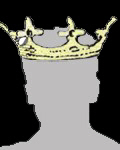








Designed by Nigel G Wilcox






The Paragon Of Metal Detecting
Powered By Sispro1
British Sterling Currency - Numismatics,
Florin
For Reference ONLY
Everything For The Detectorist
Florin


Elizabeth II 1952 - Present AD
The Florin or Double Leopard was an attempt by English king Edward III to produce a gold coinage suitable for use in Europe as well as in England (see also Half Florin or Leopard and Quarter Florin or Helm ). The florin, based on a French coin and ultimately on coins issued in Florence, Italy, in 1252, was a standard coin widely used internationally, with a value of six shillings. Unfortunately the gold used to strike the coins was overvalued, resulting in the coins being unacceptable to merchants, and the coins were withdrawn after only a few months in circulation, in August 1344, to be melted down to produce the more popular gold Noble . This is unfortunate as few specimens survived of what is often regarded as one of the most beautiful medieval English coins ever produced.
The obverse of the coin shows the King enthroned beneath a canopy, with two leopards' heads at the sides (the leopard being the heraldic "lion" on the English coat of arms); the legend is EDWR D GRA REX ANGL Z FRANC DNS HIB (Edward by the Grace of God King of England and France Lord of Ireland). The reverse of the coin shows the Royal cross within a quatrefoil, a leopard in each spandrel; the legend is IHC TRANSIENS PER MEDIUM ILLORUM IBAT (But Jesus passing through their midst went his way).
Only three examples of this coin are known to exist: two discovered on the River Tyne in 1857, and one discovered in January 2006. The latter coin was sold at auction in July 2006 for a record price for a British coin, of £460,000.
For the nineteenth and twentieth century florin worth two shillings , see florin (British coin) . For other denominations.
Florin derives from the city of Florence (or Firenze) in Italy and frequently refers to the (fiorino) gold coin struck in 1252 .
This money format was plagiarized in other countries and the word florin is used, for example, in relation to the Dutch guilder (abbreviated to Fl) and the coin first issued in 1344 by Edward III of England , then valued at six shillings, composed of 108 grains (6.99829 grams ) of gold, and more recently relating to a British pre-decimal (later nickel silver ) piece also known as a two shilling 'bit' (abbreviation 2/-).
The florin was the former two shilling piece. In 1847 the idea of decimalisation was first mooted in Parliament and as a result it was decided to mint a coin worth a tenth of a pound. The name florin was decided upon as other European countries had similar weight coins with a similar name. The plans for decimalisation were then withdrawn for 120 years but the florin continued to be circulated. In 1968 the first new 10p coins were minted being the same size, weight and composition as the florin. The old florin coins continued to be legal tender until 1993 after the new, smaller 10p piece had been introduced the previous year.
The Florin or Double Leopard was an attempt by English king Edward III to produce a gold coinage suitable for use in Europe as well as in England (see also Half Florin or Leopard and Quarter Florin or Helm ). The florin, based on a French coin and ultimately on coins issued in Florence, Italy, in 1252, was a standard coin widely used internationally, with a value of six shillings. Unfortunately the gold used to strike the coins was overvalued, resulting in the coins being unacceptable to merchants, and the coins were withdrawn after only a few months in circulation, in August 1344, to be melted down to produce the more popular gold Noble . This is unfortunate as few specimens survived of what is often regarded as one of the most beautiful medieval English coins ever produced.
The obverse of the coin shows the King enthroned beneath a canopy, with two leopards' heads at the sides (the leopard being the heraldic "lion" on the English coat of arms); the legend is EDWR D GRA REX ANGL Z FRANC DNS HIB (Edward by the Grace of God King of England and France Lord of Ireland). The reverse of the coin shows the Royal cross within a quatrefoil, a leopard in each spandrel; the legend is IHC TRANSIENS PER MEDIUM ILLORUM IBAT (But Jesus passing through their midst went his way).
Only three examples of this coin are known to exist: two discovered on the River Tyne in 1857, and one discovered in January 2006. The latter coin was sold at auction in July 2006 for a record price for a British coin, of £460,000.
For the nineteenth and twentieth century florin worth two shillings , see florin (British coin) . For other denominations.
Florin derives from the city of Florence (or Firenze) in Italy and frequently refers to the (fiorino) gold coin struck in 1252 .
This money format was plagiarized in other countries and the word florin is used, for example, in relation to the Dutch guilder (abbreviated to Fl) and the coin first issued in 1344 by Edward III of England , then valued at six shillings, composed of 108 grains (6.99829 grams ) of gold, and more recently relating to a British pre-decimal (later nickel silver ) piece also known as a two shilling 'bit' (abbreviation 2/-).
The florin was the former two shilling piece. In 1847 the idea of decimalisation was first mooted in Parliament and as a result it was decided to mint a coin worth a tenth of a pound. The name florin was decided upon as other European countries had similar weight coins with a similar name. The plans for decimalisation were then withdrawn for 120 years but the florin continued to be circulated. In 1968 the first new 10p coins were minted being the same size, weight and composition as the florin. The old florin coins continued to be legal tender until 1993 after the new, smaller 10p piece had been introduced the previous year.
Royal Monarchy
Copyright © All Rights Reserved by Nigel G Wilcox · · E-Mail: ngwilcox100@gmail.com
Pages

Elizabeth II
We do NOT buy or sell coins
Main Coin Menu

VIEW ALL MENUS
Member NCMD
6. S. Menu
























